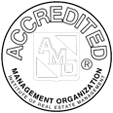How Telecommuting Is Changing The Landscape of Commercial Real Estate

Speed-of-light changes in technology have not only changed how we do business, but it has also forever changed where we do business. Mobile innovations have created a huge shift in the workforce, allowing employees in virtually every industry and capacity to work, well, pretty much anywhere. Recent statistics indicate that 24% of employed people did some or all of their work at home in 2015.
It’s not just millennials driving the work at home movement; according to data from Census Bureau’s annual American Community Survey, today’s typical telecommuter is a 49-year-old college graduate, earning approximately $58,000 year at a company that employs over 100 people. As a result, “office hours” is becoming more of a fluid concept than a tangible location. Staffers are often just as likely to complete their work from the comfort of home (or at a Starbucks) than within the restricting confines of their small corporate cubicles.
Telecommuting Delivers Undeniable Benefits
For many remote workers, the advantages of telecommuting go far beyond completing tasks in their pajamas and having a little more elbow room at their designated workstations. Allowing employees to work remotely helps overburdened team members strike a critical personal/professional life balance. Just knowing that telecommuting is an option can maximize efficiencies, minimize stress, and boost morale, helping employees feel valued throughout their tenure with a company.
Employees aren’t the only ones benefiting from working remotely. Employers find that allowing personnel the freedom to work on the go increases motivation and overall productivity levels. Additionally, constant connection to a mobile team means executives can source and retain talent on a global scale, regardless of proximity and time zone. Most importantly, telecommuting delivers several significant cost-saving advantages to employers, effectively solidifying its foothold as a viable business model for companies of any size and scope.
Commercial Property Landlords Can Seize Telecommuting Opportunity
As businesses in every vertical embrace a mobile workforce in some capacity, their approach to corporate office space shifts. While some business models can’t support remote personnel, many can and will continue to so for as long as technology and connectivity allows. What does this mean for the commercial real estate industry? Savvy industrial property landlords need to think outside the box to deliver agile office space solutions that meet (as well as anticipate) the needs of this new remote working generation.
Yes, change is challenging. However, there are viable opportunities available for property owners committed to staying ahead of the telecommuting curve. If you’re currently assessing how the mobile workforce may impact your rental, you may want to consider:
Various Leasing Strategies
Right now, there’s no such thing as a “traditional” office deal. As the workplace terrain continues to evolve and change, commercial real estate landlords must constantly evaluate their leasing terms and strategies. In short, nothing should be off the negotiating table when creating a rental contract. It’s critical to determine what matters most to your renters regarding contract length, included amenities, etc., so you can develop a lease that proves mutually beneficial to both parties.
Shared Workspaces
Previous generations of entrepreneurs often believed the size of their corporate headquarters was directly related to the success and prestige of their company. However, as businesses transition to a mobile staff, they are modifying the amount of space they need per worker. Instead of grand-scale, elaborate offices, business owners are opting for smaller satellite locations and even “pay-as-you-go” corporate space. Some executives may also pursue cooperative leasing solutions where they share common rooms such as lobbies and conference areas or, in some cases, share the workstations themselves with another business to ensure they have access to what they need when they need it, without incurring unnecessary expenses.
Smart Buildings (And Other Amenities)
Upgrading your commercial property into a “smart building” not only appeals to innovation-centric companies that offer telecommuting, but it can also help attract and retain other businesses to offset potential future occupancy gaps. Offering smart building features such as enhanced climate control, managed electricity reductions, and optimized technology access can help your tenants maximize efficiencies and minimize costs, instantly separating your building from others vying for their business.
Not sure about the ROI offered by a smart upgrade? Consider enhancements that compete directly with the “comforts of home.” Some businesses are choosing smaller, but luxuriously appointed spaces with upgraded kitchens, gyms, lounges and recreational areas to make it really hard for employees not to want to come to work.
Contact Southpace Properties Today
Are you looking for innovative ways to offer agile renting solutions with your commercial property? Southpace Properties can help. Contact us today to consult with one of our experienced commercial realtors.







